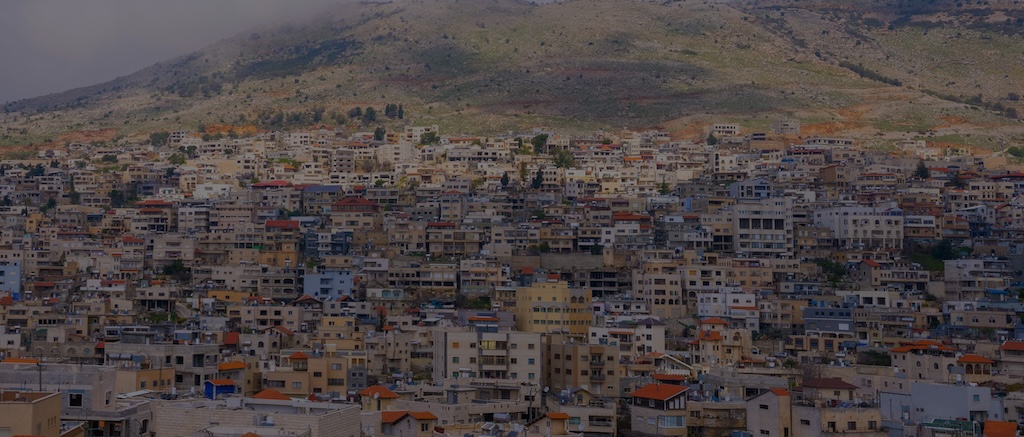Hezbollah Strike in Lebanon: Israel’s Possible Retaliation

How Israel Might Respond to Hezbollah Rocket Strike in Lebanon
Intelligence cut off: 16:00 GMT 30th of July 2024
On 27 July, a rocket struck a football pitch in the Druze town of Majdal Shams in the Israeli-occupied Golan Heights, Lebanon. The attack killed 12 children. Hezbollah was blamed for the rocket strike by Israeli authorities.
Since the 7 October Hamas-led raid into Israel, tensions have been high between Israel and Hezbollah. Hezbollah, an Iran-backed Shia militia and political party in Lebanon, are heavily armed with an estimated 50,000 fighters and a rocket and missile stockpile estimated at 150,000.
Will Hezbollah open a northern front against Israel?
While there was initial speculation that Hezbollah would open up a northern front against Israel, Hezbollah’s leader Hassan Nasrallah has been distinctly cautious to avoid major escalation. Nasrallah likely determines that the risks of a major conflict with Israel are too great, and would jeopardise Hezbollah’s path to political legitimacy.
Following an IDF operation that killed a prominent Hezbollah commander on 11 June however, Hezbollah launched over 200 rockets into northern Israel on 12 June. Tensions rose dramatically, with Israeli Foreign Minister Israel Katz subsequently threatening all-out war and the IDF confirming on 18 June that operational plans for an offensive into Lebanon had been approved. In response, Nasrallah threatened war with “no rules” and “no ceilings”, even threatening to strike targets in Cyprus, however, this was largely viewed as a propaganda move intended to project strength and rally support, rather than as a feasible military strategy.
How has the Druze community been affected?
The 27 July rocket strike caused the highest civilian death toll in Israeli-held territory since the 7 October raid. The victims were members of the Druze community, an Arab minority group that adheres to an Abrahamic faith system separate from Islam, Christianity or Judaism. An estimated 150,000 Druze live in Israeli-held territory, primarily in the north, though many Druze refuse Israeli citizenship and identify as Syrian. Israel has occupied the Golan Heights since the Third Arab-Israeli War with Syria in 1967. The funeral held on 28 July was distinctly apolitical, and Druze leaders have called for de-escalation.
Despite Hezbollah’s denials, the rocket attack was likely conducted by the Lebanese militant group. On 27 July, an IDF operation killed four Hezbollah fighters, and Hezbollah subsequently claimed to have launched two rocket strikes in retaliation, with one using a Falaq-1 rocket targeting Maale Golani which is approximately two kilometres away from Majdal Shams. The IDF has since released images of Falaq-1 debris found in Majdal Shams and claims that the rocket was launched from southern Lebanon.
Was Majdal Shams the intended target?
It is highly unlikely that the Majdal Shams football pitch was the intended target. Hezbollah have consistently attempted to avoid major escalation by responding to Israeli operations with what they calculate to be sub-threshold attacks, likely intended to deter further IDF operations while not giving Tel Aviv the pretext for a full-scale operation into Lebanon. However, unguided surface-to-surface rocket systems such as the Falaq-1 are unsophisticated and prone to inaccuracy.
In response, Israel has promised a “harsh” but contained response. Senior Israeli defence and diplomatic sources have indicated that Tel Aviv wants to avoid a full-scale war which could provoke a wider regional conflict. Similar sentiments have been briefed to the media by Hezbollah officials.
What actions will Israel take next?
On 28 July, the Israeli Security Cabinet authorised Netanyahu and the Israeli Defence Minister to decide the “manner and timing” of military operations in retaliation to the 27 July attack. While the IDF conducted a series of strikes in eastern and southern Lebanon on 28 July, it is unlikely that this operation constitutes the extent of Israel’s response and it is likely that a more intensive military operation is forthcoming. Solace Global assesses the three following scenarios to be the most likely possible outcomes:
SCENARIO 1: Increased IDF strikes in Lebanon and Syria
The most likely course of action by the Israel Defence Forces (IDF) will be to conduct air and drone strikes against strategic high-value targets (HVTs) in Lebanon and Syria. The IDF has already responded by conducting limited strikes on key Hezbollah figures within southern Lebanon and cross-border shelling on Hezbollah frontline positions.
However, previous IDF responses to major Hezbollah attacks have not been confined to southern Lebanon and have included strikes within Hezbollah’s strongholds in the suburbs of south Beirut and strikes on strategic targets within the north of Lebanon. Targets within Lebanon will likely include Hezbollah command and control centres (C2), weapons caches, logistic nodes and senior leadership to degrade and demoralise Hezbollah’s forces.
Targets within Syria will likely extend to sites linked to Iran’s Islamic Revolutionary Guards Corps (IRGC). IDF targets in Syria will likely prioritise weapons depots and other targets associated with the facilitation of lethal aid into Lebanon. Early indications are that Hezbollah has begun to reposition many of its strategic weapon systems like precision-guided missiles to complicate the IDF’s targeting process in anticipation of IDF strikes.
SCENARIO 2: IDF Limited Ground Offensive
The IDF’s second most probable course of action is to execute a limited offensive into southern Lebanon up to or just beyond the Litani River. This operation would aim to clear Hezbollah positions and push their rocket sites further north, thereby creating a buffer zone and enhancing security in northern Israel by reducing the range from which Hezbollah rockets can be launched. However, current indications are that the IDF’s Northern Command has yet to be significantly reinforced which would be a key indicator and warning of a major offensive.
Most importantly, current ceasefire negotiations with Hamas have not yet reached an agreement. Failure to reach a ceasefire with Hamas will force the IDF to maintain significant resources in Gaza and any redeployment of forces north will almost certainly be exploited by Hamas. Western diplomats have urged Israel to de-escalate and Israeli officials have suggested that their goal is to “hurt” Hezbollah without dragging the Middle East into a regional war. Fears of a major diplomatic backlash and further international isolation may deter the Netanyahu administration from pursuing a large-scale offensive into southern Lebanon.
Israel will also be cognisant of the military challenges involved with an offensive into southern Lebanon. The 2006 conflict revealed significant challenges, including higher-than-expected casualties and an underestimation of Hezbollah’s strength and tactics. Hezbollah has only improved its military capabilities since then and entrenched its positions. A full-scale conflict with Hezbollah would also result in a major escalation of Hezbollah strikes into Israel, with some of the militant group’s more capable weapon systems able to target the entirety of Israel.
It would also be a trigger for an escalation in attacks from Iran’s Axis of Resistance throughout the Middle East, including the Houthis in Yemen and the Popular Mobilisation Forces (PMF) throughout Iraq and Syria. This would invariably include increased rocket, missile and drone attacks on Israel from multiple axes. While Israel was able to withstand the Iranian-led 13 April attack, Israel’s defence was hugely guaranteed with allied assistance. The attack also revealed certain limitations in Israel’s air defence network, issues that have been further highlighted by recent Houthi drone strikes. An Israeli-provoked major escalation may not be met with the same level of external assistance, especially from Arab nations, and will likely be larger than the previous attack on Israel.
There is a high likelihood that a major increase in Iranian proxy missile, rocket and drone attacks will lead to numerous casualties within Israel. Such a development will increase internal pressure on the Netanyahu administration which is already having to deal with episodic civil unrest- potential pressure that will likely make the option of targeted strikes more appealing.
SCENARIO 3: Hezbollah seek to de-escalate
A third and least likely development is that Hezbollah takes the initiative to de-escalate by withdrawing its military capabilities north of the Litani River, which runs approximately 30 kilometres north of the Israel-Lebanon border. This move would be in accordance with the United Nation’s Security Council Resolution 1701 which forbids the Shia paramilitary force from maintaining a military presence south of the Litani.
Hezbollah’s senior leadership has repeatedly stated that it does not want a major war and is likely only conducting limited attacks into northern Israel to project strength and undermine Israel. Hezbollah’s strategy in recent years has been characterised by attempts to remodel itself as more of a legitimate political force. Though withdrawing military capabilities may be interpreted as a sign of weakness, it would provide Hezbollah with the opportunity to maintain most of its military capabilities and Hezbollah would still be in a position to exercise considerable political influence within southern Lebanon.
This influence could be jeopardised if it engages in a full-scale conflict with Israel that would degrade both its military and political capabilities. According to Lebanon’s Foreign Minister, Abdallah Bouhabib, Hezbollah is ready to commit to this course of action, although these sentiments have yet to be echoed by Hezbollah itself. This move may also secretly be endorsed by Iran. Tehran has spent decades facilitating lethal aid to Hezbollah, helping it become Iran’s primary proxy force which serves as a strategic deterrent to Israel. It is estimated that Hezbollah’s arsenal now amounts to some 150,000 rockets and missiles. This capability poses a significant threat to Israel, and if Hezbollah’s arsenal were launched near-simultaneously and coordinated with other Iranian proxy forces, it would likely overwhelm Israel’s air defences and lead to substantial casualties. Iran is unlikely to relinquish this strategic deterrent until it can ensure its own security, which it anticipates will be achieved through the development of a nuclear weapon.
However, if Iran assesses that Israel’s most probable course of action will only involve targeted strikes rather than a full-scale military engagement, it may reconsider endorsing this strategy. This is because targeted IDF strikes against Hezbollah would limit the immediate threat to Iran’s strategic deterrent, reducing the urgency to de-escalate.
Risk to Travel to Lebanon
Although it is unlikely that a full-scale all-out war will break out between Hezbollah and Israel, tensions are at their highest since the 7 October attack and some form of expanded military action by the IDF in Lebanon is almost certain.
Many countries have issued or reiterated travel advisories to their citizens to avoid all travel to Lebanon and to evacuate immediately if they are already present in the country. These countries include the US, UK, France, Netherlands, Germany, Ireland, Norway, Sweden, Belgium, Denmark and Australia.
Due to the escalation in tensions, flight disruptions are ongoing at Beirut Rafic Hariri International Airport (BEY). Several airlines, including Lufthansa, Turkish Airlines, Aegian Airlines, FlyDubai and Air France have cancelled flights scheduled to depart from BEY.
While most flights are still operating as of 30 July, it is likely that more significant flight disruptions would follow any significant IDF operation, threatening to leave travellers in Lebanon stranded. Even more limited military interventions that do not result in a No Fly Zone being enforced threaten to cause mass flight cancellations, due to the high costs of war risk insurance for airlines.
READ MORE
Hamas Leader Assassinated: Iran’s Response
In the early hours of 31 July, the head of the Hamas political bureau, Ismail Haniyeh, was killed in what has been described as “a treacherous Zionist raid on his residence in Tehran”, according to the Palestinian militant group. Iran vows retaliation. Discover the latest updates and potential impacts.
